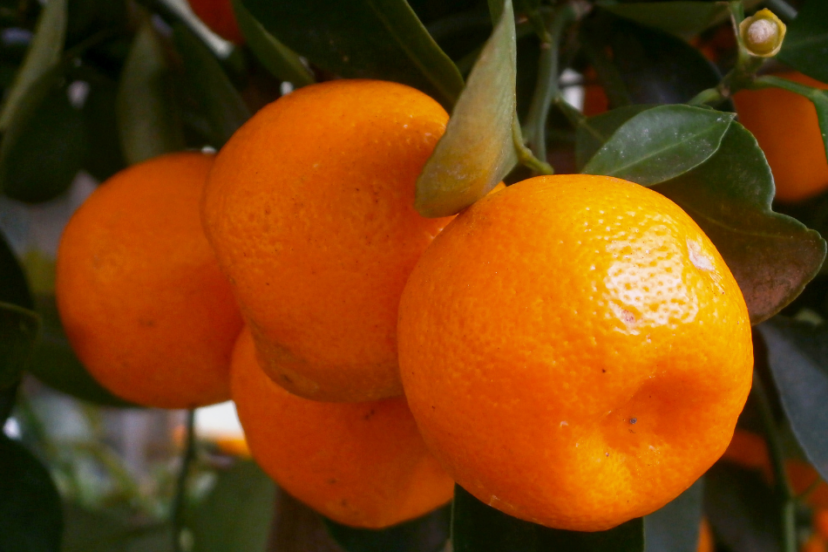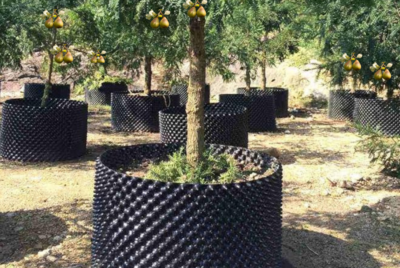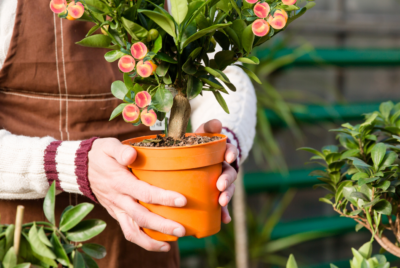10 Foolproof Tips For Growing Citrus Trees As A Beginner
What is a Citrus Fruit?
Citrus fruits are juicy, tangy fruits that belong to the genus Citrus in the family Rutaceae. They are noted for their fragrance, which is due to a high concentration of essential oils in their rind. Here’s a list of the main citrus fruits:

1.Oranges:
including navel, Valencia, blood orange, and cara cara varieties.
2.Lemons:
such as Eureka and Meyer lemons.
3.Limes:
including key lime, Persian lime, and kaffir lime.
4.Grapefruits:
like ruby red, white, and oroblanco.

5.Mandarins:
including tangerines, clementines, and satsumas.
6.Tangelos:
a hybrid of tangerine and grapefruit.
7.Pomelos:
the largest of all citrus fruits.
8.Ugli fruit:
another hybrid, a mix of grapefruit, orange, and tangerine.
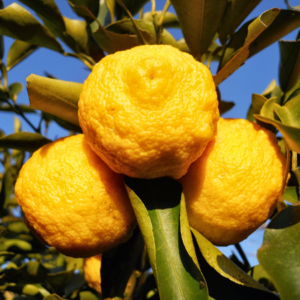
9.Yuzu:
a tart fruit often used in Japanese cuisine.
10.Sudachi:
a small, tart Japanese citrus fruit.
11.Calamondin:
a cross between a kumquat and a mandarin.
12.Kumquats:
small, oval fruits eaten whole, including the peel.
These fruits are not only prized for their flavor but are also a rich source of vitamin C and other nutrients. They can be consumed fresh, as juice, or used in a variety of culinary dishes.
Citrus trees have the potential to bring vibrant colors, refreshing scents, and delicious fruits into your home or garden. To ensure a successful and satisfying journey into citrus cultivation, it’s crucial to arm yourself with the necessary knowledge. Growing citrus trees also requires best practices for nurturing these beloved trees. Whether you’re new to gardening or looking to expand your green thumb skills, these 10 foolproof tips will guide you towards successfully growing and caring for citrus trees as a beginner.
Key Takeaways: for Growing Citrus Trees
- Choose the right variety: Select a citrus tree that is well-suited for your climate and space.
- Provide ample sunlight: Citrus trees thrive in full sunlight, so make sure they receive at least 8-12 hours of sunlight per day.
- Water consistently: Keep the soil consistently moist but not waterlogged, especially during the growing season.
- Fertilize regularly: Use a citrus-specific fertilizer to provide necessary nutrients for healthy growth and fruit production.
- Protect from frost: Citrus trees are sensitive to cold temperatures, so take precautions to protect them during winter months.
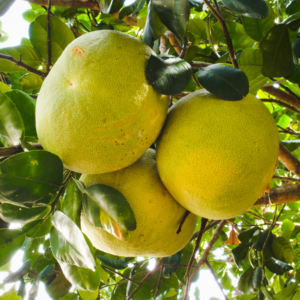
Choose the Right Variety
With respect to growing citrus trees as a beginner, selecting the right variety is crucial for your success. The climate and soil conditions of your region, as well as your preferences for taste and use, should all be taken into consideration when choosing a citrus tree to grow.
Climate Suitability
Even though citrus trees are known for their ability to thrive in warm climates, it’s crucial to match the variety to your specific location. Some citrus varieties are more cold-hardy and can withstand frost, while others require consistently warm temperatures to produce fruit. Check the temperature range and sunlight exposure in your area to ensure you select a citrus variety that will flourish.
Local Pest Resistances
There’s a wide range of pests that can threaten the health of citrus trees, including aphids, citrus psyllids, and citrus leaf miners. When choosing a citrus variety, look for ones that have strong resistance to common local pests in your area. This will help reduce the need for chemical interventions and promote the overall health of your citrus tree.
Local pest resistances are crucial in ensuring the long-term success of your citrus tree. Varieties that are susceptible to common pests in your region may require more attention and care to prevent infestations and diseases. By selecting a variety with good pest resistance, you are setting your citrus tree up for a healthier and more productive future.
Select the Best Location

Full sunlight exposure
Now, when selecting a location for your citrus tree, full sunlight exposure is crucial. Citrus trees thrive in areas that receive plenty of sunlight, ideally at least 6-8 hours per day. Choose a spot in your yard that is not shaded by buildings or trees to ensure your citrus tree gets the sunlight it needs to produce healthy fruit.
Wind-protected area
Clearly, in addition to sunlight, choosing a wind-protected area is crucial for the optimal growth of your citrus tree. Strong winds can damage the delicate branches and blossoms of the tree, affecting its fruit production. Planting your citrus tree in a location shielded from harsh winds, such as near a fence or other tall plants, can help protect it from potential damage.
A wind-protected area not only shields your citrus tree from potential damage but also creates a microclimate that can help regulate the temperature around the tree. This can be beneficial in extreme weather conditions and help the tree thrive in the long run.
Use Quality Soil
Well-draining soil
Many beginners make the mistake of using regular garden soil for their citrus trees, which can lead to root rot and other issues. You’ll want to ensure that your soil is well-draining to prevent waterlogged roots. This can be achieved by using a mix specifically designed for citrus trees or adding sand or perlite to improve drainage.
Slightly acidic pH
You’ll want to ensure that your soil has a slightly acidic pH for optimal citrus tree growth. Even though citrus trees can tolerate a range of soil pH levels, they thrive in soil with a pH of 6.0 to 7.5. With a slightly acidic pH, the trees can efficiently absorb nutrients from the soil, promoting healthy growth and fruit production.
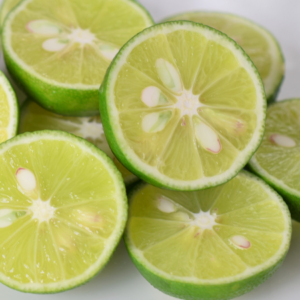
Plant Properly
Correct Depth
After selecting a suitable spot with ample sunlight and well-draining soil, it is crucial to plant your citrus tree at the correct depth. One common mistake beginners make is planting the tree too deep, which can lead to root rot and suffocation. Dig a hole that is as deep as the root ball but two to three times wider to promote healthy root development.
Don’t overcrowd
Plant your citrus tree with plenty of space around it to ensure proper air circulation and room for growth. Overcrowding can lead to competition for nutrients and sunlight, making it difficult for the tree to thrive. Plant each tree at least 8-10 feet apart to allow for adequate space for the roots to spread out. This also helps prevent the spread of diseases and pests that thrive in crowded conditions.
This spacing not only promotes the overall health of your citrus trees but also makes it easier for you to access and care for them. Overcrowding can lead to stunted growth and a higher risk of fungal infections. By giving your trees room to breathe, you set them up for success in the long run.
Water Consistently
Deep, infrequent irrigation
Unlike many other plants, citrus trees prefer deep, infrequent watering rather than frequent shallow watering. This encourages the roots to grow deep into the soil, making the tree more drought-resistant in the long run. Clearly, it’s important to water deeply so that the moisture reaches the roots, but be sure not to water too often to prevent waterlogging.
Avoid waterlogging
On the flip side, avoiding waterlogging is crucial for the health of your citrus trees. Waterlogging occurs when the soil is consistently saturated with water, depriving the roots of oxygen. This can lead to root rot, which is a serious threat to the tree’s health. To avoid waterlogging, make sure your soil has good drainage and only water when the top few inches of soil are dry to the touch.
Waterlogging can suffocate the roots of your citrus tree and hinder its ability to absorb vital nutrients. By ensuring proper drainage and watering habits, you can prevent this potentially harmful condition and help your tree thrive.
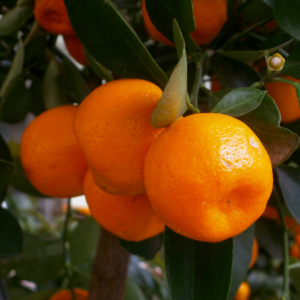
Fertilize Appropriately
Nitrogen-rich feed
Not all fertilizers are created equal when it comes to citrus trees. Any novice citrus grower should be cautious about using high-nitrogen fertilizers excessively. While nitrogen is vital for leafy growth, too much of it can actually hinder fruit production and increase the risk of disease in your citrus trees.
Regular feeding schedule
You’ll want to establish a regular feeding schedule for your citrus trees to ensure they are getting the necessary nutrients to thrive. This will typically involve feeding your trees 3-4 times a year, with specific fertilizer blends designed for citrus trees. Avoid overfeeding, as this can lead to nutrient imbalances and harm the trees in the long run.
Prune for Health
Remove dead wood
Despite the initial hesitation, pruning is a crucial step in maintaining the health and productivity of your citrus trees. Removing dead wood is crucial to prevent the spread of diseases and pests that can harm your tree. Regularly inspect your tree for any dead or diseased branches and promptly prune them off to promote overall tree health.
Shape for growth
Clearly, shaping your citrus tree is not just about aesthetics but also plays a vital role in its growth and fruit production. Shaping for growth can help maintain a strong tree structure and encourage sunlight exposure to all parts of the tree, resulting in better fruit quality and yield.
Little pruning adjustments early on can prevent the need for heavy pruning later and can help avoid the shock of removing large branches.
Shape your tree by cutting back any crossing branches that may rub against each other and cause wounds. Additionally, remove any branches growing inward towards the center of the tree to improve air circulation and sunlight exposure, which are crucial for overall tree health and fruit development. Regular pruning will also stimulate new growth and rejuvenate older branches, ensuring a productive citrus tree for years to come.
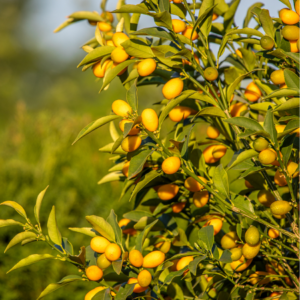
Pest Management
Regular Inspections
Keep a watchful eye on your citrus trees by conducting regular inspections. Check both sides of the leaves, stems, and the fruit for any signs of pests such as citrus psyllids, aphids, or mites. Early detection is key to preventing infestations from spreading and causing damage to your trees.
Natural Predators Encouragement
With natural predators like ladybugs, lacewings, and parasitic wasps, you can effectively control common citrus tree pests without the use of harsh chemicals. By creating a welcoming environment for these beneficial insects in your garden, you can maintain a natural balance and keep pest populations in check.
It’s important to note that encouraging natural predators can significantly reduce the need for chemical pesticides, which can harm the environment and beneficial insects. By fostering a healthy ecosystem in your garden, you are taking a proactive approach to pest management that is both effective and environmentally friendly.
Cold Protection
Frost Covers
Now, when winter’s chill threatens your citrus trees, frost covers can be a lifesaver. These lightweight fabric covers create a shield against freezing temperatures, protecting your trees from damage. Simply drape them over the tree and secure at the base to keep out the cold. Remember to remove the covers during the day to allow sunlight and air circulation.
Mulch Base
Mulch is a great way to protect your citrus trees from the cold. You can create a thick layer of mulch around the base of the tree to insulate the roots and retain soil moisture. This extra layer acts as a buffer against extreme temperature changes, providing a stable environment for the roots to thrive. Choose organic mulch like straw or wood chips for the best results.
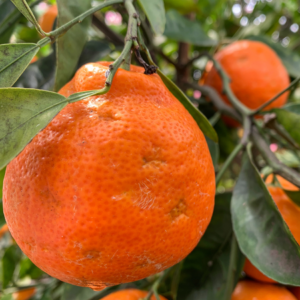
Harvest Timely
Color and firmness
To ensure the best taste and quality of your citrus fruit, it’s crucial to harvest them at the right time. While color can be a helpful indicator, the firmness of the fruit is equally important. Citrus fruits should feel firm and heavy for their size when ripe. Additionally, a gentle tug should release the fruit easily from the tree. Harvesting too early can result in sour and underdeveloped fruit, while waiting too long can lead to overripe and mushy fruit.
Taste-test readiness
Little compares to the satisfaction of enjoying a freshly picked citrus fruit from your own tree. Conducting a taste test is a foolproof way to ensure your harvest is ready. A ripe citrus fruit should have a firmness to the touch, feel heavy for its size, and exhibit a bright, vibrant color. Its aroma should be sweet and fragrant, indicating peak ripeness. When cut open, the fruit should have juicy, flavorful segments bursting with sweetness.
Summing up on Growing Citrus Trees
To wrap up, growing citrus trees as a beginner can be very rewarding with the right knowledge and approach. By following the 10 foolproof tips outlined in this article, you can set yourself up for success in cultivating healthy and fruitful citrus trees. Remember to refer to resources like The Citrus Care Mistakes We Make (& What to Do Instead) for more detailed guidance. With patience, consistency, and a little bit of expert advice, you’ll be enjoying your own homegrown citrus harvest in no time!
FAQ’s about Growing Citrus Trees
Q: What are the ideal conditions for growing citrus trees?
A: Citrus trees thrive in full sunlight, well-draining soil, and a warm climate with temperatures between 55-85°F. They also prefer humidity levels of 50-70%.
Q: How often should citrus trees be watered?
A: Citrus trees should be watered deeply but infrequently. Generally, they should be watered every 7-10 days, depending on the climate and soil drainage. It is important to allow the soil to dry out slightly between waterings to prevent root rot.
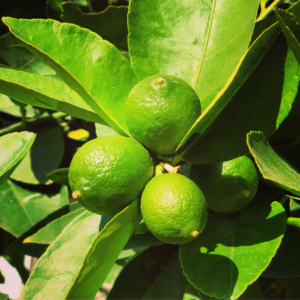
Q: Should citrus trees be fertilized? If so, how often?
A: Yes, citrus trees should be fertilized regularly to promote healthy growth and fruit production. Use a balanced fertilizer specially formulated for citrus trees every 6-8 weeks during the growing season (spring through fall).
Q: How can I protect citrus trees from pests and diseases?
A: To prevent pests and diseases, regularly inspect your citrus trees for signs of infestation or infection. Use organic pest control methods such as neem oil or insecticidal soap. Prune any affected branches and maintain good air circulation around the tree.
Q: When is the best time to harvest citrus fruits?
A: Citrus fruits should be harvested when they are fully ripe, which varies depending on the type of citrus tree. Generally, citrus fruits can be harvested from late fall to mid-spring. Fruits should be firm, brightly colored, and easily detach from the tree when gently twisted.
Tips for Growing Tangerine Trees
Companion Planting with Cantaloupes

